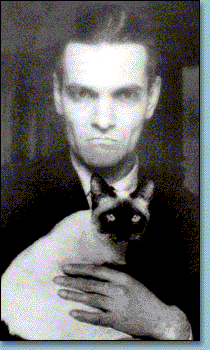ARCHAEOLOGY AND GOLF COURSE ARCHITECTURE:
ONE CRITICAL SIMILARITY BETWEEN ERIC THOMPSON AND RTJ
“My God! Do you know what this says? It says that Bird-Jaguar was the son of Shield-Jaguar!” – Mayanologists David Kelley and Peter Mathews joyful exclamation as they saw that fellow archaeologist Linda Schele had correctly deciphered hieroglyphics on a Mayan monument from Yaxchilan.
For centuries hieroglyphics remained dark to modern man. More often than not, this was because one man’s influence dominated the landscape by force of his position, but not necessarily intellect.
German Jesuit priest Athenasius Kircher (1602-1680), a powerful mathematician and philosopher in Rome single-handedly held up translation of Egyptian hieroglyphs by force of his intelligence and position. He claimed he had deciphered how to read the famous obelisks that pepper the Eternal City. One of my favorite flops is his “reading” of the obelisk in the Piazza Minerva:
The protection of Osiris against the violence of Typho must
be elicited according to the proper rites and ceremonies by sacrifices and by appeal to the tutelary Genie of the Triple
World in order to ensure the enjoyment of the prosperity
customarily given by the Nile.
Laughably, the obelisk actually contains the name and titles of Psammetichus, a pharaoh of the 26th Dynasty.
Nevertheless, by sheer force of Kircher’s will and power within Rome and elsewhere, it took over one hundred years before Jean-Francois Champollion properly deciphered the Rosetta stone and tranaslated the hieroglyphics correctly. Before, Champollion, people had just refused to believe Kircher was so dreadfully wrong and rejected all other translations offhand.
Complacency has its disadvantages.
Mayan archaeology has a similar story. Sir J. Eric Thompson (1898-1975) was one of the most influential Mayanologists from the 1930’s until his death, over forty years. He was a master of Mayan calendrics, a topic he taught himself. He worked for years in the dirt at many of the most revered sites in the Mayan world such as Chichen Itza and Copan. He studied the living Maya themselves in their villages. He worked hand in hand with the greatest archaeologists of the day. He was a prolific and convincing writer and made many indelible contributions to the study of the Maya.
However, by sheer force of his sardonic personality acerbic pen and powerful alliances on both sides of the Atlantic he single-handedly held up decoding of Maya writing from the 40s until close to the day he died.
Thompson was convinced that the hieroglyphics were merely ornamental pictures and could not possibly be letters, words or syllables. He vehemently and violently (for an academician) maintained the writing was not a language and he would never cease attacking anyone who disagreed until they were completely discredited.
Thompson was horribly, horribly wrong.
One of his early victims was brilliant American linguist Benjamin Whorf (1897-1941) who was absolutely right that the carvings were writing, but was never able to achieve a proper phonetic decipherment. Thompson ruthlessly and sarcastically attacked Whorf and other opposition relentlessly, dismissing their positions as unworthy of study or debate. Others soon joined Whorf as notches on Thompson’s belt. “It was a brave or foolhardy Mayanist who dared go against his opinion” wrote eminent Mayanologist Michael Coe in his groundbreaking book Breaking the Maya Code.
Happily, Thompson’s influence did not extend behind the Iron Curtain and the Soviet Union – the most unlikely of places – saw the birth of the truth. In 1947 historian Sergei Tokarev challenged his brightest pupil, Yuri Valentinovich Knorosov (1922-1990) – “If you believe that any writing system produced by humans can be read by humans, why don’t you try to crack the Maya system?”
That’s exactly what Knorosov did.
In the late 50s, Knorosov correctly solved that the hieroglyphics were groupings of syllables forming words and published his findings. Years of verbal sparring with Thompson ensued with all the acrimony of a Pittsburgh Steelers-Dallas Cowboys Super Bowl. Thompson even dubbed his rival “The Red Menace” and never failed to make the leap of logic in his published papers that Knorosov was wrong, among other reasons, because he worked in the U.S.S.R.
But Knorosov had survived Stalin’s terrible spectre so he had no fear of Thompson and was safely out of reach of his influence. They may not have been able to criticize the Communist Party, but that generation of Russian professors and students were free to study whether history was graven on the Maya monuments without fear of losing credibility or their heads. Tania Proskouriakoff (1909-1985) was one such gifted mind.
In 1960, Proskouriakoff, a disciple of Knorosov and his syllabary approach, proved that the monuments recorded dates of history and the deeds of rulers by a comparative analysis of a broad array of carvings. On the evening her paper made its way into Thompson’s hands for his review he stormed, “That can’t possibly be right.”
The following morning Thompson told the same people that gave him the paper, “Of course she’s right!”
Still, it was almost fifteen years before Linda Schele, Dave Kelley, Peter Mathews, Heinrich Berlin, Michael Coe, David Stuart and others finally translated the syllables. From that happy moment, when what was dark for centuries came back to life, history has flowed like the mighty Mississippi. Still, for forty-five years, the influence, name, stature, reputation, and work of one man held up the craft for nearly half a century.
The same thing happened with golf course architecture in America. Robert Trent Jones (1906-1999) – simply “Trent” to everyone in golf – was one of the most genial, affable personalities to grace the game. He designed close to 500 golf courses in over three dozen countries. His contributions to the science of building a golf course – turf grasses, hydronics, equipment and agronomy, for example – were staggering and therefore he was able to build on lava, granite, sandy beach or red rock flatirons where no one before him could. This talent made him the “go to guy” to build anywhere.
Trent was also a master marketer and a gifted salesman. He could talk anybody into anything. His catchy business phrases like “give your course a signature” were, sadly, the defining mantras of decades of the craft. As a result, for years Trent landed the most high profile resorts all over the world. As television brought color broadcasts of his beautiful water hazards, emerald fairways and cloverleaf bunker shapes, Trent’s look and feel became synonymous with American parkland golf.
Therein also lay the problem, for as time has shown, while the resorts at which you find Trent’s work are great venues, they are not necessarily the greatest golf course designs. Yet through the sheer force of his personality dominating the landscape so thoroughly for so long and through TV constantly bringing to viewers what looks pretty instead of what is a fascinating strategic golf hole, Trent’s designs became so indelibly tied to the game that it took decades to break out of the design doldrums he helped trigger.
Because of Trent’s widespread influence, draw bunkers became regularly placed at 280 yards out, slice bunkers at 260. Scenic water hazards also created heroic all or nothing shots and tight, tree-lined fairways placed a premium on accuracy. Elevated tees and long forced carries offered challenge to the professional players and expert golfers. Greens were often elevated so much that the ground game was all but eliminated in favor of aerial attack. More power, less finesse, harder is better and nothing should block the player’s view of the challenge in front of him; those were the results of Trent’s design philosophy. Blind shots, so much a part of the game where the game originated, were anathema to Trent and all but eliminated in favor of his doctrine of framing.
But as golf writer David Barrett once said, “Only straight is not so great.” Moreover, people began to rely on being spoon-fed how to play the hole and conditioned to accept that there was really only one play – down the middle.
We now know wider is better and more air space, not less helps create multiple playing options and angles of attack for all golfers. Trent’s courses were frequently murder on novices because they were either too narrow with little air space (for example Crumpin-Fox which has trees lining both sides on the Trent designed back nine) or had all uphill approach shots that all but eliminated the ground game and therefore playing options most often used by the average golfer. One mistake meant at least double bogey.
Time has shown that Trent’s design theories did not rise to the same phenomenal level as his scientific contributions since they were overly penal and of limited variety. Of the 500 courses he designed, how many are indisputable masterpieces? Perhaps Spyglass Hill? Many think so, including myself, but Jack Nicklaus once said “When I play Pebble Beach it makes me proud to be a golfer. When I play Spyglass Hill, I wish I went fishing.”
The Dunes in Myrtle Beach and Valderrama in Spain are also, arguably, among his most memorable designs. Some also consider the Robert Trent Jones Golf Club, present day home of the President’s Cup matches to be one of his greatest works and other cite Peachtree in Georgia, but everything else is solid, but does not quite soar to the heights reached by either classics by Mackenzie, Ross and Seth Raynor or the modern day work of Pete Dye and Tom Doak. Dye has numerous indisputable masterpieces including Harbour Town, Whistling Straits, TPC Sawgrass (Stadium Course), Kiawah Island (Ocean Course) and Blackwolf Run. Doak has built around two dozen designs – a mere fraction of Trent’s number – yet, Pacific Dunes, Ballyneal and Cape Kidnappers are all among the world’s greatest designs.
Beyond that, the resorts frequently surpass the golf. Golden Horseshoe, Horseshoe Bay, Celtic Manor, Adare Manor and The Wigwam are all great vacation spots with excellent to world-class accommodations, but the golf is rather pedestrian, especially for the exorbitant price tag. While he also built the New Course at Ballybunion, he course has become a lightning rod of criticism for being too penal. As far as value is concerned, his Robert Trent Golf Trail in Alabama does bring excellent conditioning and state of the art golf to a formerly barren golf region, but it is more notable as a triumph of marketing than world-class golf design.
We still labor under some of the dead weight of the marketing fallout. The godawful drivel of “signature holes” has been shown, over time, to be as meaningless as Sandy Tatum’s famous U.S. Open tournament set-up excuse “We’re not trying to embarrass the best players in the world, we’re trying to identify them.”
There is still one critical difference between Trent and Thompson – Trent was never condescending, dismissive or hostile with his competition like Thompson was. “Trent was one of the most likeable guys you’d ever want to meet. Everybody loved him because he was gracious and gentlemanly, even to his detractors” said one architect collegue. Thompson, conversely, relentlessly made ad hominem attacks on rivals as well as intellectual attacks on their work.
Where Thompson was irascible, aggressive and pedantic, Trent was affable, respectful and humble. All are unanimous in their praise of him as a human being. Nevertheless, he also shares the same historic parallel with Thompson; for decades the power of his reputation actually limited variety of thought in the design features used in golf course architecture.
Photo: Ernst Stavro Blofeld? No! “The Red Menace” – Y.V. Knorosov, circa 1960





[…] Some cerebral literature today (it’s been that kind of week – first archaeology and golf, now literature and golf). […]